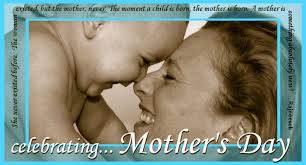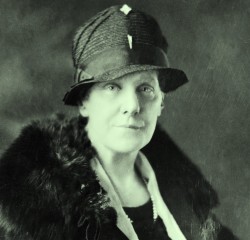Mothers Day History and Why Is It Important[/b]

Mother’s Day in the United States is a movable holiday that takes place on the second Sunday in May.
It is a celebratory day when mothers are taken out to dinner, given cards of appreciation, and receive gifts and flowers. It is also the day with the highest number of phone calls throughout the year. Initially, it did not start out as a cause for celebration but as a way of training mothers to care for young children. Over the years, Mother’s Day history in America has included family care, healing the wounds left by war, campaigns for world peace, and the celebration of mothers. The earliest version of Mother’s Day in the U.S. came about in the 1850s when Ann Reeves Jarvis of West Virginia organized the Mothers’ Day Work Clubs. These were for local women to help instruct them on how to care for children. During the Civil War (1861-1865), mothers were tending the wounds of their sons as well as other young men in hospitals. Whether the soldiers were Union or Confederate, the women read to them, wrote letters for them and provided conversation. The clubs also raised money for medicine, food, and hired women to help in homes where the mother had tuberculosis.
 It was not until after the death of Ann Reeves Jarvis in 1905 that her daughter, Anna Jarvis, successfully established Mother’s Day to honor the hard work and sacrifices mothers make for their children. She got the financial backing of a Philadelphia department store owner, John Wanamaker. As a result, the first official Mother’s Day celebration was held in May 1908 at the Andrews Methodist Episcopal Church in Grafton, WV. At the same time in Philadelphia, thousands of people attended a Mother’s Day event at Wanamaker’s store.
It was not until after the death of Ann Reeves Jarvis in 1905 that her daughter, Anna Jarvis, successfully established Mother’s Day to honor the hard work and sacrifices mothers make for their children. She got the financial backing of a Philadelphia department store owner, John Wanamaker. As a result, the first official Mother’s Day celebration was held in May 1908 at the Andrews Methodist Episcopal Church in Grafton, WV. At the same time in Philadelphia, thousands of people attended a Mother’s Day event at Wanamaker’s store.
Jarvis urged club members to remain neutral during the war so as to treat the wounded and provide food and clothing to soldiers stationed nearby regardless of their political affiliation. After the war, she organized a Mothers’ Friendship Day event in the summer of 1865 to promote reconciliation among the soldiers and citizens. Some members of the community were concerned that with the various political sentiments represented, the event might erupt in violence. However, the gathering was held at the courthouse in Pruntytown, West Virginia, and was so successful that it became a regularly scheduled event for the next several years.
Other notable women organized various versions of Mother’s Day throughout history that included family celebrations and public gatherings for world peace. Julia Ward Howe, the abolitionist and suffragette, wrote a call to action in 1870 for mothers to promote world peace. The name of this document was the Mother’s Day Proclamation. Howe is best-known for having written the words to the popular Civil War song, Battle Hymn of the Republic. Used as a rousing cry for the Union, it also was used for anti-slavery movements and women’s rights.

Mother’s Day in the United States is a movable holiday that takes place on the second Sunday in May.
It is a celebratory day when mothers are taken out to dinner, given cards of appreciation, and receive gifts and flowers. It is also the day with the highest number of phone calls throughout the year. Initially, it did not start out as a cause for celebration but as a way of training mothers to care for young children. Over the years, Mother’s Day history in America has included family care, healing the wounds left by war, campaigns for world peace, and the celebration of mothers. The earliest version of Mother’s Day in the U.S. came about in the 1850s when Ann Reeves Jarvis of West Virginia organized the Mothers’ Day Work Clubs. These were for local women to help instruct them on how to care for children. During the Civil War (1861-1865), mothers were tending the wounds of their sons as well as other young men in hospitals. Whether the soldiers were Union or Confederate, the women read to them, wrote letters for them and provided conversation. The clubs also raised money for medicine, food, and hired women to help in homes where the mother had tuberculosis.

Jarvis urged club members to remain neutral during the war so as to treat the wounded and provide food and clothing to soldiers stationed nearby regardless of their political affiliation. After the war, she organized a Mothers’ Friendship Day event in the summer of 1865 to promote reconciliation among the soldiers and citizens. Some members of the community were concerned that with the various political sentiments represented, the event might erupt in violence. However, the gathering was held at the courthouse in Pruntytown, West Virginia, and was so successful that it became a regularly scheduled event for the next several years.
Other notable women organized various versions of Mother’s Day throughout history that included family celebrations and public gatherings for world peace. Julia Ward Howe, the abolitionist and suffragette, wrote a call to action in 1870 for mothers to promote world peace. The name of this document was the Mother’s Day Proclamation. Howe is best-known for having written the words to the popular Civil War song, Battle Hymn of the Republic. Used as a rousing cry for the Union, it also was used for anti-slavery movements and women’s rights.
